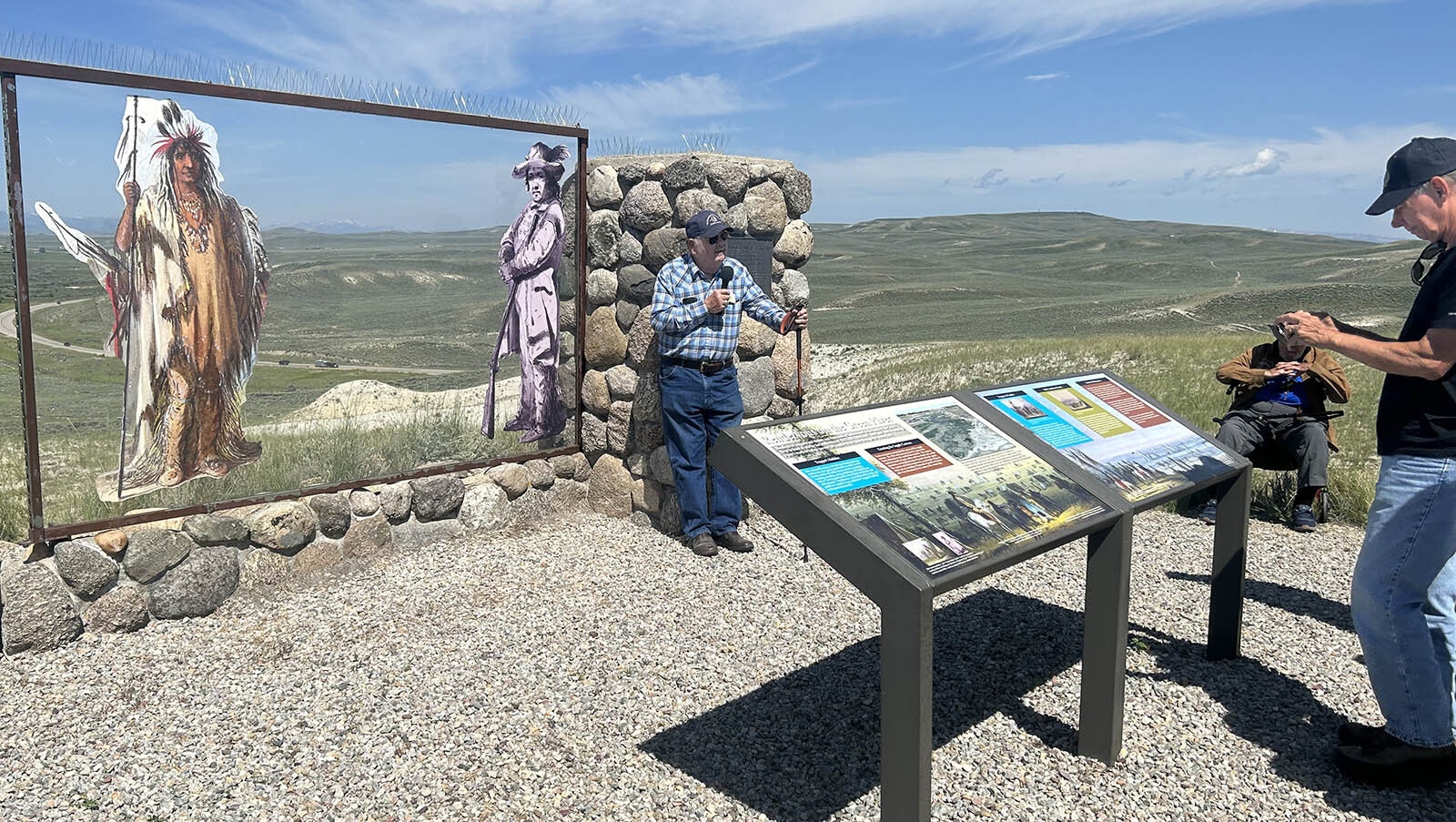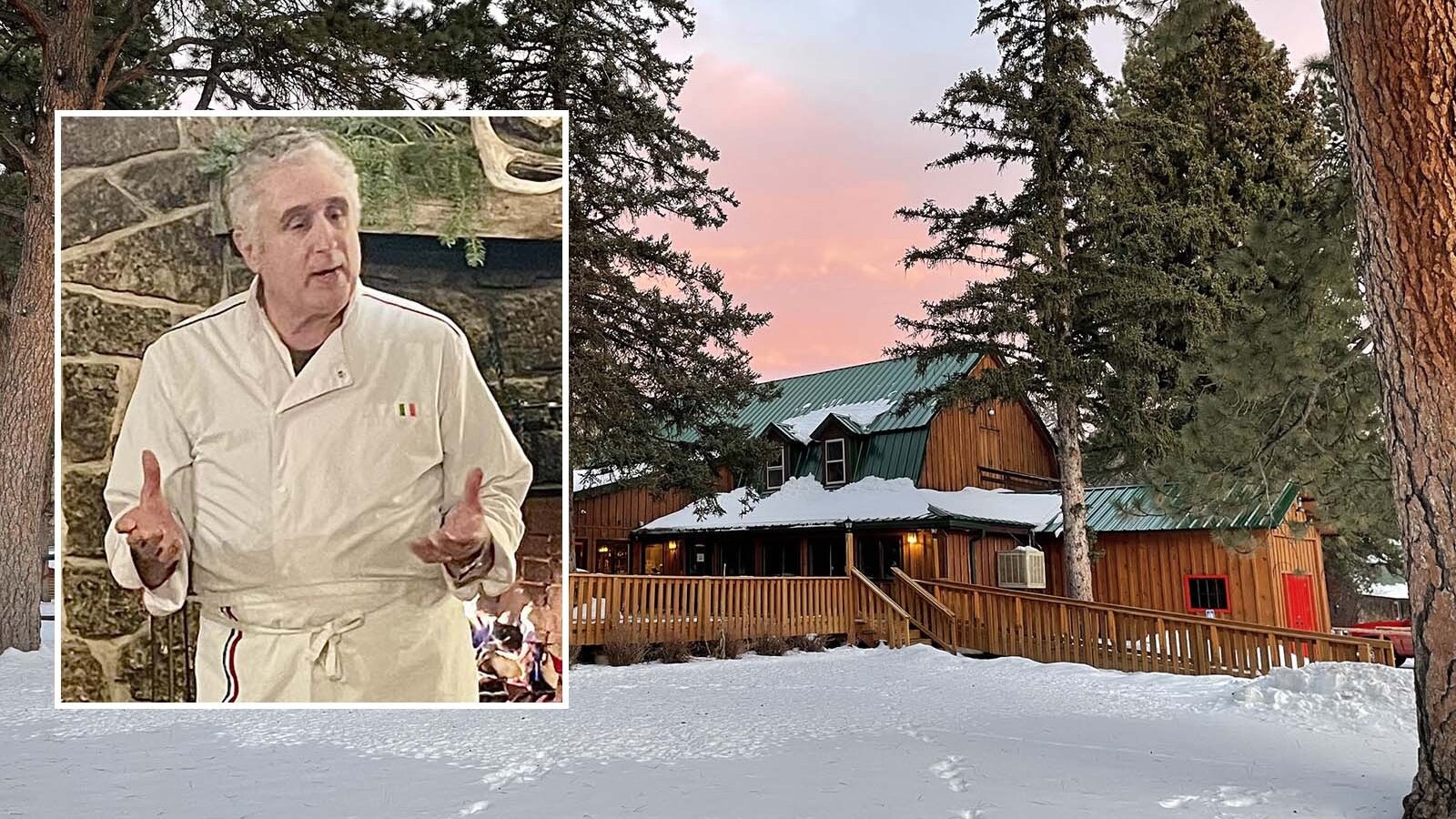The 1833 Rendezvous in Sublette County was a wild affair, even by mountain man standards.
According to records of the event, much whiskey was consumed, and several trappers were attacked in their sleep by rabid wolves. Some of those bitten went crazy and either died or melted into the forests never to be seen again.
The rendezvous is still a big part of local culture in Sublette County and yes, it’s also still a big party. Every year thousands of folks come to Pinedale the first full weekend in July to enjoy rendezvous events like a pageant, rodeo interpretive lectures and lots of other activities. No rabid wolves had shown up this year at the time of this writing.
Historically, trappers came west for beaver pelts to supply the hat trade in Europe and on the East Coast. The rendezvous was a chance for trappers to socialize and resupply with the goods they needed including gunpowder, trapping supplies, blankets, knives and many other provisions.
And Wyoming was ground zero for 1830s mountain man rendezvous. Six of the final eight rendezvous were held in Sublette County along the Green River, about 10 miles west of Pinedale.
This year the celebration included an auto tour of rendezvous sites. Cowboy State Daily joined about 50 people from as far away as Florida to learn more about what the original rendezvous were like and their history.
Jim Hardee, an author, historian and editor of the Rocky Mountain Fur Trade Journal, served as the tour guide. Hardee said the 1833 Rendezvous was the last good gathering for the mountain men.
After that the fur market began its decline, new forts and trading posts curtailed the need for the fur companies to ship supplies to the trappers and the later rendezvous filled up with missionaries and grifters.
Hardee said tens of thousands of beaver pelts were harvested in this area during the 1830s but by 1833 beaver populations were dropping due to trapping pressure while the hat makers were beginning to switch over to silk.

1833 A Rendezvous to Remember
In one of the camps during the 1833 event, only one man, Charles Larpenteur, stayed sober. He was put in charge of the store and later reported that for several days nothing sold except whiskey.
Fur trader Robert Campbell was observed "flat on his belly in the green grass, pouring out what he could not hold in," according to Larpenteur's record.
The camps, spread out along the Green River for 10 miles, were also terrorized by wolves during the 1833 Rendezvous. Several men were bitten. Some suffered spells, writhing on the ground in pain and foaming at the mouth.
The auto tour group made four stops along 10 miles of the Green River, starting upstream from its confluence with Horse Creek. Hardee said the large spread-out camp accommodated about 350 trappers, 1,000 Native Americans, mostly Shoshone, and as many as 1,500 horses and mules.
"Rendezvous sites were important," he said. "You needed water, grass and firewood. They had to be mobile. Sometimes they moved camps during a rendezvous when they ran out of grass."
To provide the interpretation for the tour Hardee worked from a diary kept by Nathaniel Jarvis Wyeth. Wyeth was an ice merchant in Boston, Massachusetts who came west to establish a fur trading business. He was reported to be the first American to travel from the Atlantic Coast to the Pacific Coast during the same year.
According to Wyeth's journal rabid wolves entered the camps on three consecutive nights between July 18 and July 24, 1833. Several men received bites on their faces and necks including an Indian who soon "grew silent and gloomy." He later was seen leaping from his horse, rolling frantically on the ground, gnashing his teeth and foaming at the mouth.
"Three or four days later an Indian, believed to be the same, was observed crossing a valley and pursued; but he darted away into the fastness of the mountains, and was seen no more," according to an account by trapper Joe Meek.
Hardee told the story of trapper George Holmes who was bitten on the face and neck by a wolf while sleeping outside of a makeshift tent made of birch and willow branches. Holmes helped his friend William Drummond Stewart build the enclosure, but Stewart asked Holmes to find other accommodations that night when a young squaw came to visit.
According to Stewart's account he was roused that night by shouts and gunshots to find "Poor Holmes was seated on the ground, the side of his head and his ear bleeding; a mad wolf was ravaging the camp. Poor Holmes changed from that hour."
Hardee said after Holmes left the rendezvous and was traveling through South Pass near Lander, he didn't want to cross any streams or water.
"They blindfolded him to get him across but soon after that he stripped himself naked and ran off into the wilderness, never to be seen again," Hardee said.

Three Kinds of Trappers
Clay Landry, a fur trade historian and author, said the ledgers of the fur companies "are a gold mine of information," stored on microfilm in an archive in St. Louis, Missouri. He said there were three types of fur trappers- free trappers, company trappers and sort of a hybrid he referred to as hide trappers.
The free trappers including Hugh Glass and Johnson Gardner, pursued beaver in the Upper Green River Basin. The free trappers were at the top of the trapping hierarchy, Landry said.
"They were on their own hook, they bought their own horses, powder and traps and they could go anywhere they wanted," he said.
However, the free trappers normally partnered with other trappers for security. The notion that trappers were on their own working in the wilderness is a myth perpetuated in movies and some books, he said.
Some trappers were employees of fur companies who worked for wages amounting to $180 to $200 per year. They were known by the French term engageé or engaged to the company. Cash rarely traded hands. The transactions were all done on paper and when the trappers brought in pelts they received credit from the fur companies that was turned into supplies and other trade goods.
"Most of them aligned with certain fur companies for safety reasons," Landry said. "There was safety in numbers and there were too many Indians who wanted to steal their horses and wild animals that wanted to eat them."
Wyeth established Fort Bonneville in the Upper Green River Basin and Fort Hall near present day Pocatello, Idaho. He had a plan to catch and salt salmon on the Columbia River and then carry the fish and furs around the tip of South America and then north to Boston by ship.
But the fur boom had begun to fizzle by the time Wyeth became established and he ended up returning to Boston to resume his ice business in 1836.
The third arrangement between fur traders and trappers at the time was the companies would outfit a trapper with supplies and the trapper would collect fur and sell it at set prices ranging from $3 to $6 per pound, Landry said. These men were referred to as hide trappers.
Rendezvous Records on Canvas
The painter and portraitist Alfred Jacob Miller attended the 1833 Rendezvous. Close to 700 of his paintings can be viewed online.
For more information on trappers and the fur trade, check out Pinedale's Museum of the Mountain Man or online.






